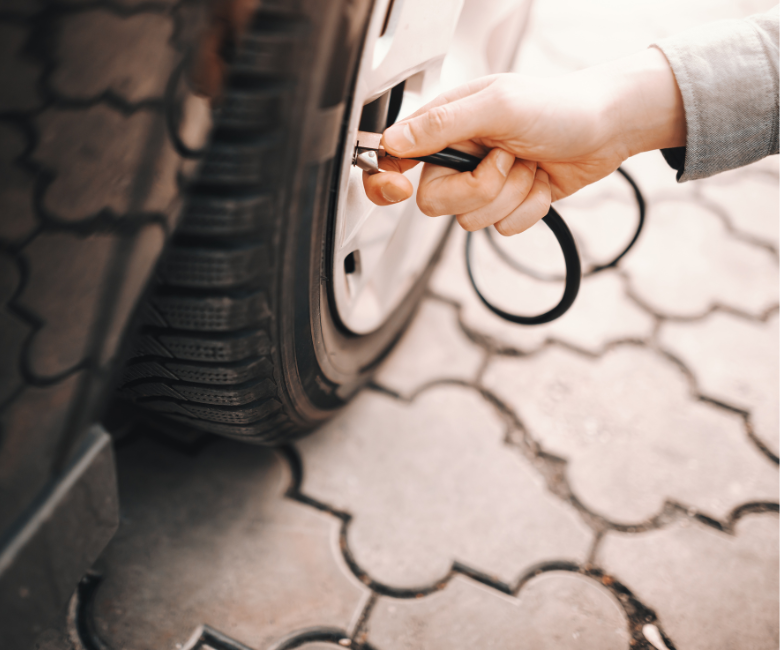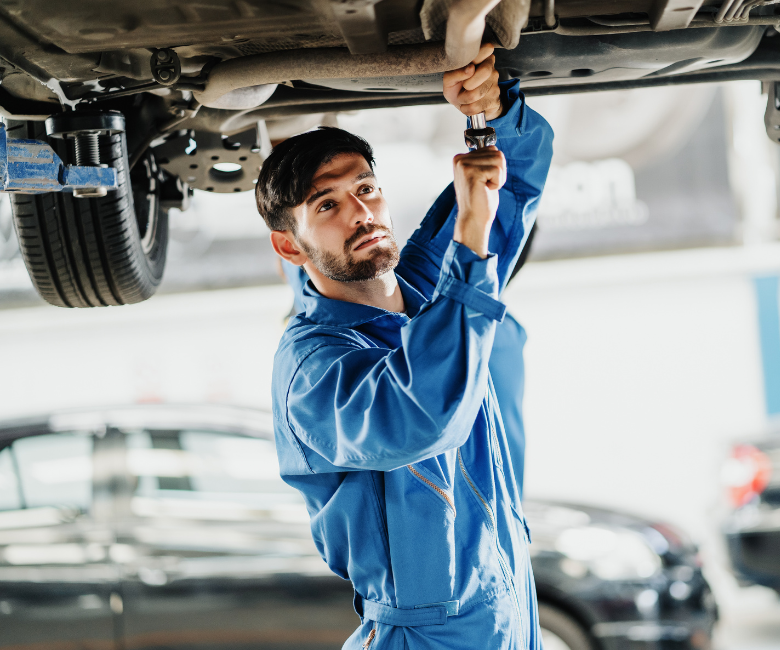
How to Maintain Your First Car: Essential Car Maintenance Tips for New Owners
- Vehicle Maintenance
- PEAK
- February 27, 2024
Basic car maintenance is easier than it seems. Car ownership can be scary for new owners, but if you follow these tips, you'll learn how to easily maintain your first car.
Car ownership is a major milestone, and it's normal to feel a little anxious about all of the responsibility that comes with it. You can rest easy, though: basic car maintenance is easier than it might seem. All it takes is a little attention to detail.


First Things First: Check Your Owner's Manual and Warranty
Your owner's manual and warranty are filled with useful information that will help you create a car maintenance checklist specific to your vehicle's make and model. They also contain important details about the car maintenance schedule you should follow and what type of oil and fluids you should use.
Make sure you perform service tasks at the mileage intervals stated in your warranty. Otherwise, you risk voiding the protection it provides.
The 30/60/90 Rule
Most vehicle manufacturers follow what's known as the "30/60/90 rule." This rule identifies the service actions you should take when your car reaches 30,000, 60,000, and 90,000 miles, respectively. Here's a breakdown of the service actions typically required at each of these intervals:
30,000 Miles
Vehicle manufacturers usually recommend that you bring your car in for its first scheduled maintenance checkup at 30,000 miles. At this stage, your technician should:
- Change your engine oil, fuel filter, and air filter
- Clean your engine compartment
- Check your fluid levels and top them off as needed
- Inspect your brakes
Brake pads and rotors can last anywhere from about 25,000 to 65,000 miles. Yours may still be okay at 30,000 miles, or they might need replacing. Beyond these basic checks and fixes, your car shouldn't need any major service or repairs at this stage.
60,000 Miles
By the time you reach 60,000 miles, your vehicle will likely show a little more wear. During this service visit, your technician will perform additional checks on your:
- Battery
- Tires
- Brakes and brake fluid
- Transmission fluid
- Timing belts, spark plugs, and hoses
If you've been good to your car up to this point, your belts, hoses, and spark plugs should still be in decent shape. However, your mechanic may recommend new tires, since your treads will be wearing down. If you didn't have your brake pads and rotors changed at 30,000 miles, you'll likely need to change them now.
You'll probably also need to have your brake fluid and transmission fluid flushed and changed. These fluids usually require replacement at least every 30,000 to 60,000 miles.
90,000 Miles
Your 90,000-mile tune-up will likely involve more replacements and upgrades, as wear and tear will now be affecting key mechanical components like timing belts, hoses, and spark plugs. By this point, your vehicle is getting older and age may be catching up with it. A good mechanic can give you helpful advice regarding additional service steps you should take.


Other Regular Checks and Maintenance Tasks
Beyond following the 30/60/90 rule or your vehicle manufacturer's recommended car maintenance schedule, you should also perform a few other checks and upkeep tasks on your own. These include:
Oil Changes
The American Automobile Association (AAA) recommends changing your oil every 5,000 to 7,500 miles as part of your basic car maintenance. If you have an older car, it's wise to change the oil more often—somewhere in the range of every 3,000 miles.
Though it's possible to change engine oil yourself with the right-know how, car experts usually recommend entrusting the job to a pro. Lots of little things can go wrong, and you can inadvertently cause some significant damage if you make a mistake.
At each oil change, you should also have a technician check your:
- Air filter
- Constant velocity joint (CVJ) boots
- Exhaust system
- Battery terminals, cable connections, and fluid levels
A lot of quick-service oil change shops are notorious for exploiting their customers' lack of technical knowledge to upsell them on repairs and upgrades they don't really need. User-generated reviews and word of mouth can help you avoid these places and find a technician you can trust.
Antifreeze and Coolant
Antifreeze and coolant checks are included in your scheduled maintenance. You can also have a technician look at them when you have your oil changed.
However, if you rack up a lot of mileage, you'll want to keep a closer eye on these vital fluids. Professional guidelines vary widely: Some mechanics recommend changing your antifreeze or coolant as often as every couple of weeks. Others cite a lifespan range of about five years or 30,000 miles.
In either case, investing in premium products like PEAK antifreeze and coolant will help preserve your car's strong performance.
Tire Pressure and Rotations
Use a quality gauge to check your tire pressure about once a month. It's also a good idea to perform a quick check before leaving on a major road trip. Don't worry about the pressure specifications on your tire's sidewall. Instead, make sure they're inflated to the levels stated in your owner's manual.
Regular tire rotations help you maintain a smooth ride by evenly distributing tread wear. Manufacturers usually recommend that you rotate your tires every 5,000 miles or so.
Maintain Your Wiper Blades
Car maintenance tips often overlook wiper blades. As a result, many drivers don't replace them nearly as often as they should. Wiper blades usually last about six months, or less if they endure prolonged periods of heavy use. If your wipers leave streaks, it's a sign that they need replacing.
When you shop for new wiper blades, look for products built for the climate and driving conditions you deal with. For best results, match your new blades with premium windshield wash to enhance safety and maximize visibility.
Keep It Clean
Washing your car does more than make it look nice. It also removes salt, dirt, and other debris that can cause corrosion, rust, and paint damage. Aim to wash your car at least once a week, even if it doesn't look dirty—not all contaminants are readily visible.
For added protection, wax your car seasonally, or at least twice a year. Wax wards off corrosion caused by precipitation, road salt, UV rays, and tree sap. It also gives your car a like-new shine.
The Last Word: Listen to Your Car
As a final piece of advice, listen to what your car is telling you. If you notice any leaks, or if you hear or smell anything unusual, have it checked out. Do the same if any service alerts pop up on your instrumentation panel: ignoring these can lead to bigger and more expensive problems.
For more expert car maintenance tips, and to shop for premium auto care products, be sure to visit PEAKAuto.com.

